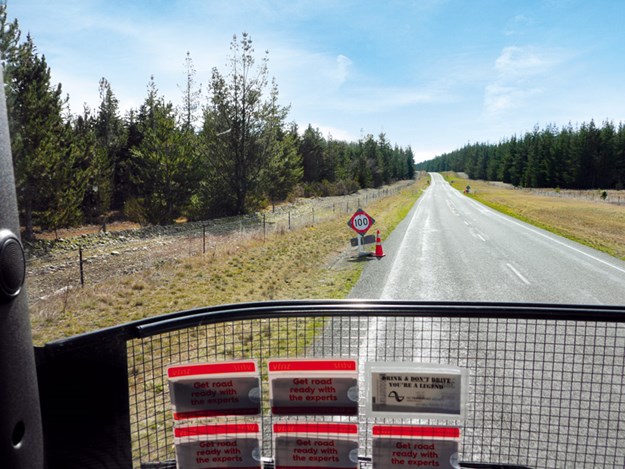Comment: Managing vehicle maintenance
Developing a preventative maintenance programme is an integral part of managing a fleet to prevent unscheduled repairs and downtime

Well-maintained vehicles reduce unscheduled repairs and downtime. Preventative maintenance is more cost-effective than waiting until something major goes wrong. Uncontrolled vehicle maintenance costs have killed many a good transport operators business.
Poor maintenance of a heavy vehicle fleet hits the trucking operator in the pocket because without regular servicing and care of the basics, this can lead to major repairs and that can amount to tens of thousands of dollars. Unscheduled downtime means your vehicle is not earning any money.
Develop a partnership with your fleet maintenance provider. Vehicles that are maintained safely and efficiently also cost less to run, are less likely to be out of service for extended periods, and are less likely to be involved in crashes. Major scheduled repairs can be organised in between runs or while the driver is having a break.
When purchasing new vehicles, take the time to spec the vehicles for the demands of the intended task. Under-spec’ing vehicles can lead to increased maintenance costs, and equally, vehicles that are over spec’d for the task are an inefficient use of capital that will impact your budget.
Compare the various manufacturers’ warranties. These can range from 100,000km through to 1,000,000km and have a huge impact on the vehicle’s whole life cost. Compare the service intervals, which can range from 10,000km to 60,000km plus.
Look for fixed cost maintenance options from the vehicle supplier. This should be tied to the length of the warranty. Negotiate an agreement or contract with a tyre provider not only for discounted tyres but also the regular checking of your vehicle tyre pressures and condition. Underinflated tyres have a huge impact on vehicle stability and safety.
Prematurely failing tyres can also be a significant cost. Instil the importance of checking and maintaining tyre pressures and condition with your drivers. Poorly maintained vehicles also use more fuel.
Make sure your drivers are aware of their responsibilities and are trained to perform daily vehicle pre-trip inspections. This is critical to keeping on top of all vehicle maintenance and safety issues. As a transport operator, you need to have robust systems in place to follow up on any issues your drivers identify in their daily vehicle pre-trip inspections.
Your drivers are one of your most important assets; investing in driver training will help to lower vehicle maintenance costs. Properly maintaining vehicles reduces driver’s frustration and increases their job satisfaction. You have put a considerable investment into your drivers; don’t lose them due to poor vehicle maintenance.
Having a vehicle repairs and maintenance system is a key component to managing vehicle costs. The association’s telematics partners have user-friendly products that are designed to help you manage costs associated with operating a fleet and support a safety-focused culture.
Their technology platforms provide many benefits. Being aware of what’s happening across your fleet and drivers is more critical than ever to managing your costs and on-road risk. A powerful combination of real-time visibility, scheduled reports, and exception notifications provide you with the necessary controls to manage risk across your vehicle fleet.
This is well worth exploring for your transport business; contact the association and we can put in touch with one of our telematics partners. Many transport operators have a paper-based system and that works too. Setting up reminders in your diary will give you the prompt to action.
It’s also important to include all your company vehicles not just your trucks. With the right systems in place, you can track individual vehicle maintenance costs. As vehicles age and distance increases, so do the maintenance costs. Understanding the sweet spot between maintenance costs and vehicle residual values will help you to understand when the best time is to move older vehicles on and replace them with new ones.
Poorly maintained vehicles impact on more than just increased costs; they impact your business reputation, customer trust and satisfaction, compliance, and health and safety outcomes.
Vehicle accidents are a leading cause of workplace death and injury, yet many businesses are not even properly measuring this critical risk, let alone managing it well. There’s a lack of publicly available data and this needs to be addressed to help trucking operators identify the issues so that they can become a safe fleet.
Having a good telematics-based system in place for your vehicles will help you build an accurate data picture, monitoring trends and driver behaviour, plan scheduled maintenance, and enable you to make more informed decisions.
Talk to the experts at the NZ Trucking Association. If you’re looking to purchase new vehicles or starting your own trucking business, get in touch with the association. Our business cost model will help you to spec the correct vehicle and identify all your costs.
We include realistic vehicle maintenance costs, fuel use, tyre wear, etc. in our cost models, which are based on our substantial industry knowledge. We can help you consider all the options to help you make the most informed decision.
Find new and used trucks for sale in NZ
Keep up to date in the industry by signing up to Deals on Wheels' free newsletter or liking us on Facebook.





.jpg)


.jpg)


-(1).jpg)
.jpg)
.jpg)
.jpg)
-(1).jpg)
.jpg)
